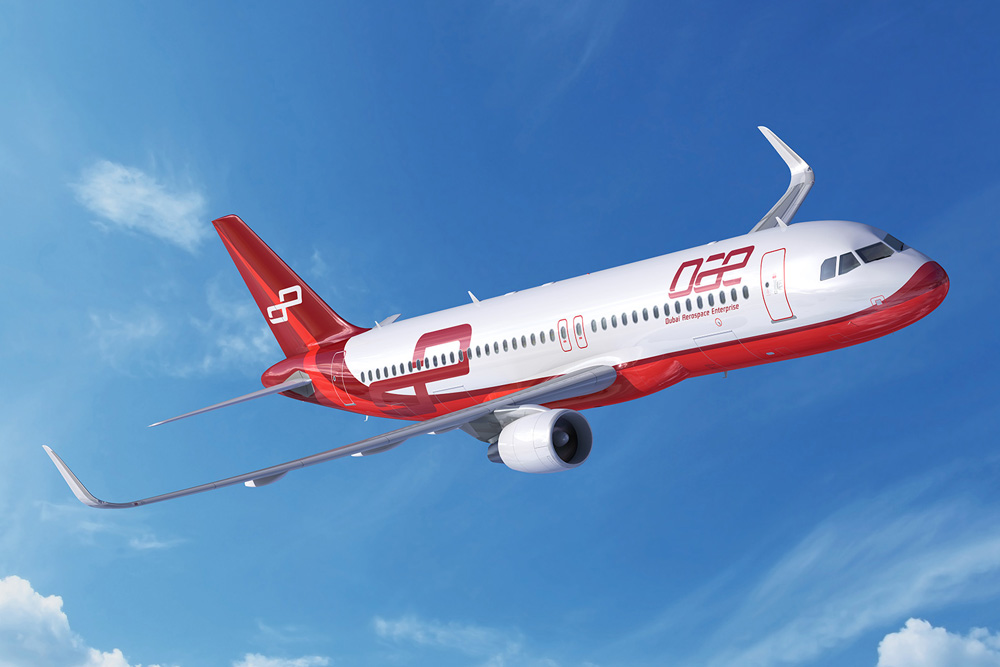Dubai Aerospace Enterprise (DAE) profit for 2024 climbed 36.2% to $477.5 million. Revenues for the year were $1.3bn, up 8.7% compared to 2023. Lease revenues for the year were $1.2bn, compared to $1.1bn in 2023.
The company’s operating profit was $711.1 million, up 19.4%, which was driven by higher revenues and gain aircraft disposal, though partially offset by increased costs in providing maintenance services as well as lower loss reversal allowance. DAE said in its earnings call that its strong profitability metric growth is expected to continue in 2025.
Gain on disposal of aircraft was $101.6 million for the year, compared to $59.6 million in 2023.
Maintenance service provision expenses were $107.2 million, up from $89.6 million, while reversal of loss allowance was $5 million for the year, compared to $24.2 million a year prior. In addition, depreciation and amortization expenses were $566.6 million, down from $572.9 million in 2023. DAE’s annual expenses totalled $820.1 million, up from $779.8 million a year prior.
Net finance costs increased 9.2% to $379.4 million for the year, due to increased finance expense driven by loan drawdowns during 2024.
During the call, management said that, at a market level, lease rates were either stable or strengthening. The company added that valuations of existing aircraft were continuing to “show an upward bias” and expects this trend to continue this year, driven by strong demand for fuel efficient aircraft — particularly as delivery constraints continue.
“This is something that we don't see slowing down as clients continue to inquire about availability of new aircraft that we can provide them,” DAE CEO Firoz Tarapore said in the call.
In a statement, he added: “Demand for aircraft from airline customers remains strong. At year-end 2024, all our aircraft were either on long-term leases or under LOI with airline customers, and our order book positions until mid-2026 are committed on long-term leases to airline customers.”
As of the end of the year, had a total owned, managed and committed fleet of 506 aircraft, consisting of 329 owned, 110 managed, and 67 committed to acquire aircraft. The company’s owned and managed aircraft are on lease to 127 lessees in 62 countries.
DAE Capital’s leased fleet was mostly comprised of the Americas at 28%, followed by the Middle East, Asia Pacific and Europe at 20%, 18%, and 15%, respectively. South Asia, Africa, and China comprised the remaining fleet on lease with 10%, 5%, and 4%, respectively.
“Our lease portfolio is highly diversified, geographically and by airline, with our top five lessees representing 25.7% of our portfolio,” DAE read in its report. Emirates Airlines is its largest customer, representing 7.3% of its fleet based on net book value.
DAE acquired 83 aircraft in the year. “That's a big number,” commented Tarapore during the company's earnings call. “30 of which were for our orderbook. Now, as you know, or as you heard me say during prior calls, we received far fewer aircraft than we were expecting from Boeing. However, as you can see from the numbers, we were able to more than make up for that shortfall by acquiring assets in the secondary market, which continues to be super active.”
He added: “We were able to curate very precisely the aircraft that we wanted, both in terms of aircraft type, and in terms of the exposure, the lessee exposure, that we wanted from the secondary market.”
The company’s total fleet comprised of 216 Airbus and 223 Boeing aircraft. The company’s Airbus fleet was largely comprised of A320 CEO and A320 NEO family aircraft with 132 and 56, respectively. DAE’s Boeing fleet was mostly comprised of 737 MAX family and 737 NG family aircraft with 105 and 91, respectively.
Narrowbodies made up the majority with 384, while passenger widebodies totalled 42 and freighter widebodies were 13 total. The company also had 67 turboprops in its fleet, all ATR 72-600s.
The company’s net book value totalled $11.8bn as of the end of the year. Future contracted lease rental income from its owned fleet amounted to $7.3bn.
As of the end of the year, the company committed to purchase 67 aircraft, which mainly consist of 56 due for delivery from an aircraft sale agreement with CALC for its Boeing 737 orderbook in 2023. The aircraft are scheduled to be delivered between 2025 and 2027, with a total capital commitment of around $3.8bn. The sale agreement with CALC was for the purchase and delivery of 64 aircraft. Eight aircraft were delivered from the agreement as of the end of 2024 with around $0.4bn paid to the seller.
Tarapore said the “only conditionality” for the company's confidence on whether the 56 Boeing aircraft could be delivered by 2027 is whether it can reach the 38 per month production cap on its 737 MAX aircraft, imposed on by the US Federal Aviation Administration (FAA) after the Flight 1282 incident in January last year.
“I think the only conditionality that we see is that, for whatever reason, Boeing may not be able to get up to the FAA Max in the timeframe that they think they will get up to that number if that happens, I think the schedule is good,” said Tarapore.
The company had agreed to purchase 100% of Nordic Aviation Capital (NAC) at the end of the year along with its portfolio, which is expected to be complete in the first half of this year. The company said in its earnings call it was not providing further comment on the transaction.
As of the end of the year, the company’s unsecured debt was $6.4bn and its secured debt was $1.7bn. Available liquidity was $3.8bn, comprised of $3.2bn in undrawn credit facilities and $582 million in cash and cash equivalents. Total equity was $3.1bn. Net debt to equity was 2.42x, down from 2.53x at the end of 2023. Total assets were valued at $13bn.
“Our balance sheet today is stronger than ever before and our metrics for capital adequacy, liquidity, and funding are well within our committed bands, which was reflected in ratings actions taken by both Moody’s and Fitch during the year,” added Tarapore.
During the year, the company’s ratings were upgraded by Fitch and Moody’s to BBB and Baa2, respectively.

